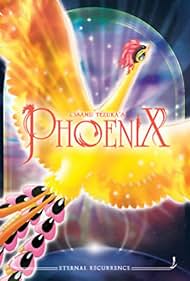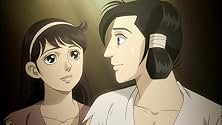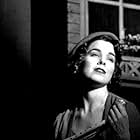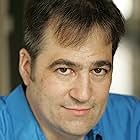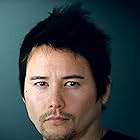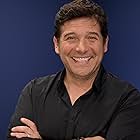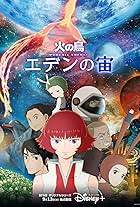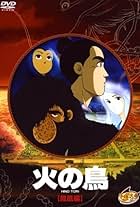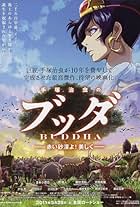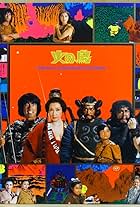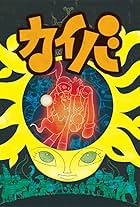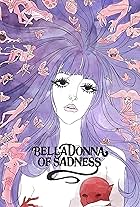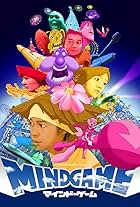Throughout history, from the distant past to the far future, men seek to capture the Phoenix, the source of eternal life. But what does success truly mean?Throughout history, from the distant past to the far future, men seek to capture the Phoenix, the source of eternal life. But what does success truly mean?Throughout history, from the distant past to the far future, men seek to capture the Phoenix, the source of eternal life. But what does success truly mean?
Browse episodes
Storyline
Did you know
- TriviaThe 9th anime series produced by Tezuka Productions.
- ConnectionsReferenced in Xiaolin Showdown: Bird of Paradise (2005)
- SoundtracksPhoenix
Composed by Hidekazu Uchiike
Arranged by Yûji Nomi
Performed by Czech Philharmonic (as Czech Philharmonic Orchestra), Min Chen and Mio Isayama
Featured review
The long-running "Phoenix" (Hi no Tori) manga series is widely considered the finest work to come out of manga creator Osamu Tezuka's long career. All eleven volumes deal with themes of life, death, immortality, survival and man's role in the cosmos and the stories take place over a wide variety of time periods from the distant past to the far future. The 2004 "Phoenix" TV series adapts five of Tezuka's tales into 13 TV episodes. "Dawn" gets four episodes; "Resurrection" gets two; "Strange Beings" is adapted as one episode, retitled "Transformation"; "The Sun" gets four episodes; and "A Tale of the Future" gets two. All the manga have been translated into English and released in the west by Viz Media. I read all the relevant manga volumes before watching the series so I could examine how the adaptation treats Tezuka's ideas.
"Dawn" is set in ancient Japan and follows a disparate set of characters caught up in Queen Himiko's mad quest to find the legendary Phoenix so she can drink its blood and restore her youth. Many innocent villagers are slaughtered as her troops follow her orders in their search for the Phoenix. A woman from one village marries a medicine man washed up on her shore who turns out to be a secret advance agent for Himiko. They survive the subsequent slaughter and wind up trapped in a cave with all sorts of other animals after a volcano erupts and they and the animals spend long months digging their way out. They reach a crater with air and water and vegetation but are trapped, seemingly forever, unless one of their eventual offspring can find the footholds to climb out. This story, despite some cuts, is pretty close to Tezuka's original.
"Resurrection" is set on the moon and involves a young researcher who is injured and given a part-mechanical brain that distorts his perception to the point that he sees humans as walking piles of jagged shapes and a robot as a beautiful girl. The work on the moon is part of the Phoenix Project, a top-secret plan to find the Phoenix and use it to try to restore life on a devastated Earth. It becomes a love story between the young man and the robot. The original story had a much more epic narrative with parallel stories spanning hundreds of years and involving a revolt and mass suicide by robots. The two TV episodes change a lot and omit the most interesting parts of the manga.
"The Transformation" is a single tale, set in old Japan, of a samurai's daughter whose hatred for her father leads her to murder the nun who tries to cure his fatal disease. She winds up having to take the place of the nun and use the nun's single Phoenix feather to cure the sick and heal the wounded for a period of 30 years before history repeats itself. It's a cleverly told tale and is generally close to the manga.
"The Sun" is the longest of Tezuka's Phoenix stories and offers a jarring set of parallel stories, one set in ancient Japan and one set in the far future, whose interweaving only makes sense when we get to the conclusion. The four-episode TV adaptation cuts out the future story to make things easier, both for the animators and the audience. Even so, it's still quite a complicated story and one of the most ambitious here, as it tells of a nobleman-warrior from Ancient Yamato who is punished by his enemies by having a wolf's head grafted onto his own. Taking the name Inugami, he joins a small village in a land where the wolf spirit clan still holds sway and he eventually becomes the town's mayor. The emperor, however, wants to banish the old gods and make Buddhism the official religion for everyone. Buddhist demons get into the mix and a spectacular battle is waged between an army of demons and an army of ancient spirits. This battle is not in the manga but was invented for the series and comprises one of the most spectacular scenes in the series. This story is also the most explicit in its criticism of governments, political power and religion.
"The Future" is a fairly close adaptation of "A Tale of the Future" even though it starts about a third of the way in, leaving out the first 42 pages of the manga. It's also the most ambitious of the series, chronicling an Earth so devastated by nuclear war (started by computers) that only one human, Masato, survives and only with the infusion of immortality by the Phoenix. It follows his patient wait—over a billion years!—for life to return to Earth, and only with his crucial contribution. This two-parter is easily the masterpiece of the series.
The animators do not try to duplicate Tezuka's drawing style. Instead, under the direction of Ryosuke Takahashi ("Armored Trooper Votoms," "Gasaraki"), they have opted for a more generic style of TV animation—slick and polished, particularly in the historical scenes, but with little of Tezuka's driving spirit. I wanted something bolder and more innovative, although I have to say the final two-parter, "The Future," delivers the most imaginative design and action in the series and comes closest to bringing Tezuka's ideas to animated life.
The music score by Hidekazu Uchiike and Yuuji Nomi is quite beautiful and remains fresh and buoyant throughout, using vocals in a very evocative way and drawing on certain classical themes. The opening credits sequence is a spectacle in its own right, combining images from the past and future, with a high-tech Buddha on display, in a concise and moving way, with great theme music.
Four other films based on the Phoenix manga were made in the 1980s: "Phoenix 2772" (1980), "Phoenix: Karma" (1986, also reviewed on this site), "Phoenix: Yamato" (1987) and "Phoenix: Space" (1987). I would argue that "2772" and "Karma" remain the best adaptations of the series yet.
"Dawn" is set in ancient Japan and follows a disparate set of characters caught up in Queen Himiko's mad quest to find the legendary Phoenix so she can drink its blood and restore her youth. Many innocent villagers are slaughtered as her troops follow her orders in their search for the Phoenix. A woman from one village marries a medicine man washed up on her shore who turns out to be a secret advance agent for Himiko. They survive the subsequent slaughter and wind up trapped in a cave with all sorts of other animals after a volcano erupts and they and the animals spend long months digging their way out. They reach a crater with air and water and vegetation but are trapped, seemingly forever, unless one of their eventual offspring can find the footholds to climb out. This story, despite some cuts, is pretty close to Tezuka's original.
"Resurrection" is set on the moon and involves a young researcher who is injured and given a part-mechanical brain that distorts his perception to the point that he sees humans as walking piles of jagged shapes and a robot as a beautiful girl. The work on the moon is part of the Phoenix Project, a top-secret plan to find the Phoenix and use it to try to restore life on a devastated Earth. It becomes a love story between the young man and the robot. The original story had a much more epic narrative with parallel stories spanning hundreds of years and involving a revolt and mass suicide by robots. The two TV episodes change a lot and omit the most interesting parts of the manga.
"The Transformation" is a single tale, set in old Japan, of a samurai's daughter whose hatred for her father leads her to murder the nun who tries to cure his fatal disease. She winds up having to take the place of the nun and use the nun's single Phoenix feather to cure the sick and heal the wounded for a period of 30 years before history repeats itself. It's a cleverly told tale and is generally close to the manga.
"The Sun" is the longest of Tezuka's Phoenix stories and offers a jarring set of parallel stories, one set in ancient Japan and one set in the far future, whose interweaving only makes sense when we get to the conclusion. The four-episode TV adaptation cuts out the future story to make things easier, both for the animators and the audience. Even so, it's still quite a complicated story and one of the most ambitious here, as it tells of a nobleman-warrior from Ancient Yamato who is punished by his enemies by having a wolf's head grafted onto his own. Taking the name Inugami, he joins a small village in a land where the wolf spirit clan still holds sway and he eventually becomes the town's mayor. The emperor, however, wants to banish the old gods and make Buddhism the official religion for everyone. Buddhist demons get into the mix and a spectacular battle is waged between an army of demons and an army of ancient spirits. This battle is not in the manga but was invented for the series and comprises one of the most spectacular scenes in the series. This story is also the most explicit in its criticism of governments, political power and religion.
"The Future" is a fairly close adaptation of "A Tale of the Future" even though it starts about a third of the way in, leaving out the first 42 pages of the manga. It's also the most ambitious of the series, chronicling an Earth so devastated by nuclear war (started by computers) that only one human, Masato, survives and only with the infusion of immortality by the Phoenix. It follows his patient wait—over a billion years!—for life to return to Earth, and only with his crucial contribution. This two-parter is easily the masterpiece of the series.
The animators do not try to duplicate Tezuka's drawing style. Instead, under the direction of Ryosuke Takahashi ("Armored Trooper Votoms," "Gasaraki"), they have opted for a more generic style of TV animation—slick and polished, particularly in the historical scenes, but with little of Tezuka's driving spirit. I wanted something bolder and more innovative, although I have to say the final two-parter, "The Future," delivers the most imaginative design and action in the series and comes closest to bringing Tezuka's ideas to animated life.
The music score by Hidekazu Uchiike and Yuuji Nomi is quite beautiful and remains fresh and buoyant throughout, using vocals in a very evocative way and drawing on certain classical themes. The opening credits sequence is a spectacle in its own right, combining images from the past and future, with a high-tech Buddha on display, in a concise and moving way, with great theme music.
Four other films based on the Phoenix manga were made in the 1980s: "Phoenix 2772" (1980), "Phoenix: Karma" (1986, also reviewed on this site), "Phoenix: Yamato" (1987) and "Phoenix: Space" (1987). I would argue that "2772" and "Karma" remain the best adaptations of the series yet.
- BrianDanaCamp
- Sep 16, 2012
- Permalink
Details
- Release date
- Countries of origin
- Official site
- Language
- Also known as
- Жар-птица
- Production companies
- See more company credits at IMDbPro
- Runtime25 minutes
- Color
Contribute to this page
Suggest an edit or add missing content

